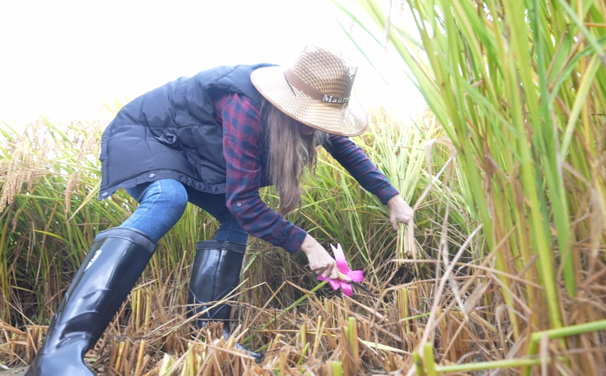Feeding the wonder of our origins

A bird's-eye view of part of the Shi'ao site that includes a group of rice paddies dating back 6,700 to 4,500 years in Yuyao, Zhejiang province.[Photo provided to China Daily]
Discoveries of millennia-old rice paddies in Zhejiang province may cast a new light on past lifestyles, Wang Kaihao reports.
Recent studies of the world's oldest known large-scale rice paddies, uncovered in Yuyao, East China's Zhejiang province, may throw light upon the dawn of civilization in the Yangtze River Delta, experts say.
The discovery of the Shi'ao site was first publicly announced by the Zhejiang Provincial Institute of Cultural Relics and Archaeology in December 2020, following the unearthing of a site that hosted a group of rice paddies dating back 6,700 to 4,500 years.
Follow-up research continued this year, and four sections of the paddies-each covering an area of between 700 square meters and 1,900 sq m-have been examined, according to Wang Yonglei, a researcher at the Zhejiang institute who leads the ongoing excavation.
"We not only unearthed a road network, which was composed of field ridges," he told an online conference with the National Cultural Heritage Administration last week. "More importantly, evidence of an irrigation system, including waterways, was found."
Archaeologists have found 22 field ridges, as well as excavating a large number of pottery items and stone tools, which are believed to have been for agricultural use.
The paddies belong to three periods: 4700-4500 BC, 3700-3300 BC, and 2900-2500 BC. They span more than two key archaeological cultures in the region: Hemudu Culture, which dates back about 7,000 to 5,300 years, and Liangzhu Culture, that existed between 5,300 and 4,300 years ago.
"Archaeological findings show the development of rice paddies was continuous throughout that time," Wang explains. "Rice-growing agriculture is thus the crucial foundation to feeding people and supporting the economy of both cultures. It is also key for nurturing civilization."
According to Wang, research of the area around the Shi'ao site has also begun to reveal its extraordinary status. The area was once planned for infrastructure construction, but the plan has been dropped to preserve the ancient paddies.

Some pottery pieces excavated from the paddy fields.[Photo provided to China Daily]
While older grains of rice have been discovered in China-in Shangshan Culture dating back 10,000 years, also located in today's Zhejiang province, carbonized rice was found-this is the first discovery of a complete, ancient rice-growing system, including paddies and irrigation channels.
"Our previous studies mainly focused on the grains, like the evolution of their varieties, to reflect how people cultivated them," Chen Xingcan, director of the Institute of Archaeology, Chinese Academy of Social Sciences, says. "But the Shi'ao site offers a rare chance to directly study human farming activities."
The discovery of the Shi'ao site may also greatly contribute to studies of a bigger picture surrounding Liangzhu Culture.
The Archaeological Ruins of Liangzhu City in Hangzhou, Zhejiang, were listed as a UNESCO World Heritage Site in 2019. It indicates a jade-worshipping civilization and the capital city of a regional state, covering a significant area around Taihu Lake.
A developed water conservation system was found around the city ruins. An estimated 200,000 kilograms of carbonated rice was unearthed in a core area of the city, but no ancient rice paddies have been found within the city ruins.
At the Maoshan site, near the Liangzhu ruins, a group of small-scale rice paddies was discovered, once thought to be a "state-owned farm", and these new findings at the Shi'ao site offer more clues to the social structure of that regional state from an agricultural perspective.
"The discovery of rice in Liangzhu city means there must have been a national-level system for rice production," Li Xinwei, a researcher with the Institute of Archaeology, says. "The Shi'ao site was thought to be on a marginal area of Liangzhu Culture, but the new findings may give us a new perspective."
Song Xinchao, deputy director of the National Cultural Heritage Administration, expects upcoming research at the Shi'ao site to unveil specific rice-growing technology of the time.
"We can also see how farmlands were managed," Song says.
"However, it's only a start, and it's too early to draw firm conclusions."

 China makes outstanding contributions to global energy transition
China makes outstanding contributions to global energy transition  Ningbo village inspires Malawi official
Ningbo village inspires Malawi official  A look at China's economic data in the first three quarters of 2024
A look at China's economic data in the first three quarters of 2024 


